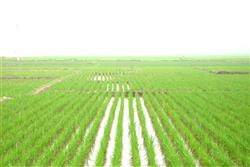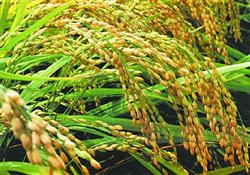What are the diseases and insect pests of rice?

What are the diseases and insect pests of rice? Please introduce the control methods of rice diseases and insect pests, such as rice blast, sheath blight, rice stem borer, rice planthopper, rice red spot black foam cicada, which are harmful to rice and should be paid attention to. The control methods can be referred to the following methods: Rice blast is seriously caused by long-term irrigation of deep water or excessive drought, partial application of nitrogen fertilizer and so on, and there are three susceptible periods in rice life. They are seedling stage, heyday stage and heading stage. Panicle neck blast has the greatest effect on rice yield, which should be prevented as early as possible at break stage and full heading stage. Rice blast is divided into seedling blast, leaf blast, node blast, panicle blast and grain blast. The comprehensive control measures of rice blast should be centered on planting disease-resistant and high-quality varieties, based on fitness cultivation and supplemented by chemical protection. (1) rational use of disease-resistant varieties. (2) Scientific field management: cultivate strong seedlings, apply sufficient basic fertilizer, increase potassium fertilizer, zinc fertilizer and organic fertilizer, apply ear fertilizer skillfully, and sun up the field at the right time. (3) seed treatment: soaking seeds in 10% 401 antibacterial agent 1000 times solution for 48 hours or 80% 402 antibacterial agent 2000 times solution for 48-72 hours directly accelerating germination, or 20% tricyclazole wettable powder 500,700 times solution soaking seeds for 24 hours, washing and accelerating germination. (4) Chemical control: leaf blast should be protected by spraying at the initial stage of the disease (when the rate of diseased leaves is 3%), panicle blast should be protected at the early stage of heading, and the spraying times should be determined later according to weather conditions. Medicament selection: 75% tricyclazole wettable powder 30 g or 40% Fuji 1 100 g or 40 g distemper EC 150 g 200 g per mu. In order to ensure the effect of chemical control, the water consumption of 50 kg per mu should be guaranteed, and the dosage should not be increased blindly. Rice sheath blight: excessive nitrogen, close planting and too much irrigation can easily lead to serious occurrence of rice sheath blight. The control of rice sheath blight should be based on agricultural measures combined with chemical control. The main results are as follows: (1) to pay attention to the cultivation and disease prevention centering on fertilizer and water management, fertilizer should pay attention to stable application of nitrogen and phosphorus and increase application of potassium and zinc fertilizer. According to the principle of applying sufficient base fertilizer and ensuring panicle fertilizer, it is not suitable to apply nitrogen fertilizer to raise seedlings in the middle stage of rice growth. Irrigation should carry out the principle of "shallow before, in the sun, and moist after". (2) Chemical control: the last 3-4 leaves of rice plant should be protected mainly, and the pesticide should not be applied too early (before jointing stage) or too late (after heading stage). Medicament selection: 5% Jingangmycin water agent 150 ml per mu or 12.5% streptomycin clear water agent 100-200 ml, or 20% chloramphenicol suspension 60-100 ml or 15% vermicellin wettable powder 50 g, 50-70 kg spray with water. The pesticide should be sprayed on the middle and lower part of the rice plant, and the key control period should be from booting to full heading stage. Rice stem borer: Chilo suppressalis, Chilo suppressalis, rice leaf borer, rice stem borer serious harm can cause white ears. Prevention and cure method: 15% thunderdrill EC 90ml or 13.5% core cannon EC 90ml or 13.5% Vac EC 90ml or 13.5% duel EC 50ml or 10% Jinfo EC 40ml or 20% chlorpyrifos & # 8226 or octane EC 90ml are sprayed with 60 kg of water. Control period of rice stem borer: (1) Chilo suppressalis: pesticide should be applied in the peak period of low-instar larvae. (2) Chilo suppressalis: the first drug is used to control the rice belly stage (three days before the break period), and can be used again after seven days. (3) Rice leaf roller: when new buds appear, the amount of water should be sufficient and the spray should be uniform. Rice planthopper, commonly known as "Lianzi", is also one of the main pests of rice. The more common ones are white-backed planthopper and brown planthopper. Both species of planthoppers moved in from the southern rice region with the southwest airstream. Generally speaking, it is mainly white-backed planthopper in the early stage of rice and brown planthopper in the later stage. That is, the white-backed planthopper is mainly damaged from tillering to jointing stage. In the affected fields, the rice leaves turned yellow and the tillers decreased, and in serious cases, the rice died in the "falling pond". The damage of brown planthopper is mainly from booting to maturity. When the damage is serious, the base of the rice clump becomes dark brown, the whole plant dies gradually, and the damaged field is often "yellow pond". When the damage is serious, the whole field is yellow and burning. The suitable period for the control of the two planthoppers should be started when the number of insects per 100 clumps in the field is more than 50, and the strategy of "pressing before and after control" and ruthlessly controlling the main pest generation should be adopted. ① spray: you can choose 10% imidacloprid wettable powder, 25% propofol wettable powder 2000 times, 25% aldicarb wettable powder, 10% cicada powder 300 times, 80% diphacinone EC 800 times, spray, can have better effect. ② pouring: you can choose 10% imidacloprid or 25% chlorpromazine wettable powder, 40 grams per mu; 40% monocrotophos EC, 50 milliliters per mu, poured with heavy water, 400kg water per mu. ③ granules or poisonous soil: sprinkle 2-3 kg of 3% carbofuran granules or 4% Yechuan San granules into rice fields, or 150 grams of 80% dichlorvos EC, diluted with appropriate amount of water, and mix fine soil with 20-25 kg sprinkler. Rice red spot black foam cicada, alias red spot foam cicada, rice foam cicada, commonly known as "thunder fire worm, blowing bubble worm". Generally scattered activities, eat in the rice fields in the morning and evening, hide in the weeds when there is high temperature and strong light, and fly in groups in the field in the evening. After eating, the adults are hidden in the back of the crop leaves or weeds, and the damage on the edge of the field is more serious than that in the center of the field. After feeding, adults can constantly excrete colorless transparent liquid feces and pollute crop leaves. The adult is sexually active, can fly and jump well, can fly 2cm and 3m at a time, and has the characteristic of avoiding light and feeding. In the form of adults, rice red spot black foam cicada mostly sucks leaf sap and flower juice in cloudy day, early morning or evening, resulting in blighted grain and affecting yield. The damaged leaves are red, and the damage from the middle of the field to the perimeter of the field is gradually aggravated, which looks like a fire from a distance. From the peak of the 3rd instar to the time when the adults are unearthed, when there are more white foams on the soil crevices and stems or leaves of the plants on the ridge, and when there are more than 3 insects per square meter in the paddy field. The nymphs of the rice red spot black foam cicada live in the soil and feed on the root juice of weeds through the cracks on the soil surface. At this time, 3% carbofuran granules mixed with fine soil can be used to control the ridges of the fields. Spray control with 20% triazophos EC 600 times, or 40% isocarbophos EC 600 times, or 45% malathion EC 1000 times, or 40% omethoate EC 1500 times during the peak period of adult occurrence. Click to get more rice planting techniques click to get more food crop planting techniques
- Prev

How should rice cultivation be managed?
How should rice cultivation be managed? Please introduce the management method of planting rice management can refer to the following methods: First, water-saving irrigation technology Rice growth period irrigation should adopt water-saving technology, according to the rice growth period of water characteristics and requirements for irrigation drainage, mainly divided into deep water green, shallow water points...
- Next

How to avoid high temperature affecting the fruiting of rice?
How to avoid high temperature affecting the fruiting of rice? Please introduce the methods to avoid the effect of high temperature on the fruiting of rice, and sow seeds at the right time to avoid the hot temperature. The best heading and flowering date of mid-season rice was arranged in mid-August to effectively avoid the frequent high temperature and summer drought weather from late July to early August. Reasonable screening.
Related
- The first cup of black tea in spring, the flavor and history of tea gardens in Kenya, Africa
- The computer can not only choose potatoes, but also grow tea rice. AI will grow winter oolong tea champion.
- It is not only the inflated tea bitten by insects, but also engraved with the four seasons tea in Beipu.
- The Oriental Beauty Tea Festival in Zhuxian County takes the stage at the weekend to experience the plus-size feast of oil tea.
- & quot; Oriental Beauty Tea & Exploration of Emei in Hsinchu, the hometown of quot;
- The new variety of strawberry "Tainong 1" dessert is the first choice with mellow aroma. Crimson gorgeous
- History of Tea in Taiwan: from Wild Inner Mountain to Export Tea Garden
- Two types of Taiwan Oriental Beauty Black Tea won the British three-Star Award for Childhood Tea Xiang Zhang Jiaqi changed from pilot to champion tea maker.
- Banana species and varieties: the planting history of Taiwan Xianren banana and dwarf banana is long, is banana disease resistant?
- Coffee planting Technology: Qianjie Coffee from Seedling to harvesting

